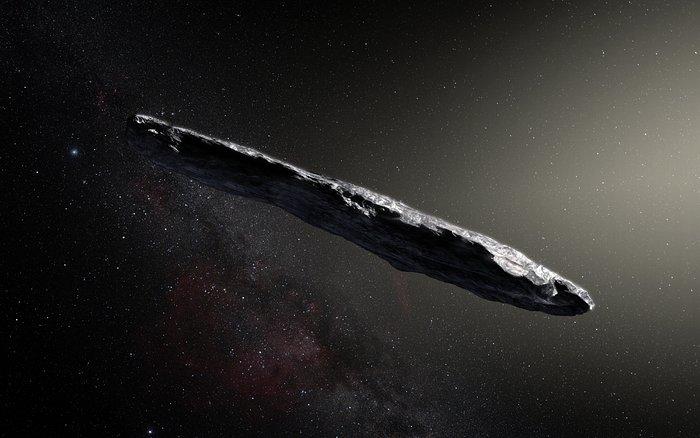Scientists want to catch alien objects from other solar systems with a huge ring of satellites around the sun
Ambitious plan would allow astronomers to see interstellar objects close up for the first ever time

Scientists have unveiled an ambitious plan to catch a visitor from another solar system using a vast ring of satellites.
The project has already received limited support for Nasa and scientists say that, if the grand project were to succeed, it could offer an entirely new understanding of how planets form and what other, distant solar systems could look like.
When researchers saw the object known as 'Oumuamua in 2017 it made history as the first interstellar visitor ever spotted, and since then they have gone on to find more examples. Scientists think there is probably many more flying past Earth that are never seen, simply because they are too small and moving too quickly to spot in the night sky.
That also means that astronomers' view of any objects they do see is very limited. If researchers do manage to spot an object before it has moved on out of our solar system, their view is usually limited, and that challenge means that objects such as 'Oumuamua are still shrouded in mystery.
“There are a lot of fundamental challenges with observing ISOs from Earth — they are usually so small that light from the sun needs to illuminate it in a certain way for our telescopes to even detect it,” said Richard Linares, an assistant professor in the Department of Aeronautics and Astronautics (AeroAstro) at MIT, in a statement.
“And they are travelling so fast that it’s hard to pull together and launch a mission from Earth in the small window of opportunity we have before it’s gone. We’d have to get there fast, and current propulsion technologies are a limiting factor.”
Researchers would be able to learn vastly more about such objects if they were able to actually visit one, if only with a spacecraft. Scientists have offered a grand plan to try and get up close to such an object, and learn more about it.
The plan would involve launching a set of static satellites, or statites, that would be put in place around the solar system. They would wait in a kind of hibernation until an interstellar object was detected, and then leap into action to hunt it down and get up close.
The MIT scientists propose that the satellites would be powered by a solar sail that would be precisely calculated to allow it to avoid being pulled in by the Sun's gravity, because it would also be pushed away by solar radiation, allowing it to stay still and ready to spring into life. Such a design would also allow it to slingshot towards any interstellar object and catch up with it as it flies.
“Studying an interstellar body close-up would revolutionize our understanding of planet formation and evolution,” said Benjamin Weiss, professor of planetary sciences in MIT's Department of Earth, Atmospheric and Planetary Sciences, and one of the many scientists from the university working on the new plan.
“For the first time, we could obtain sensitive measurements of the bulk composition of other solar systems. We could also learn how quickly and how commonly objects transit between solar systems, which will tell us the feasibility of the interstellar transfer of life.”
The plan has received approval from the NASA Innovative Advanced Concepts (NIAC) Program, which gives funding to innovative new ideas that could change future space missions. It is currently on Stage 1 of that process, and the MIT scientists say they will work over the coming months to create a proof-of-concept and then hopefully develop those ideas in the future.
Join our commenting forum
Join thought-provoking conversations, follow other Independent readers and see their replies
Comments
Bookmark popover
Removed from bookmarks